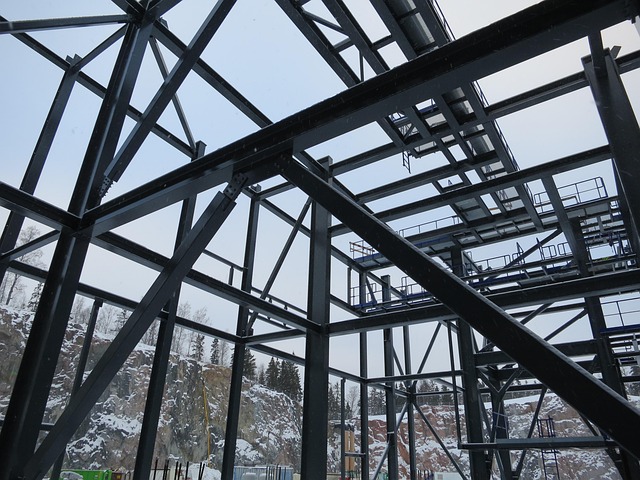A well-organized site structure is essential for modern SEO, acting as a navigation tool for users and search engines. By creating logical categories, sub-categories, and interlinking relevant pages (internal linking), you enhance accessibility and content relevance. This improves user satisfaction, reduces bounce rates, increases session durations, and ultimately boosts search engine rankings. A successful site structure SEO strategy balances usability with technical optimization, focusing on resource-rich, topic-relevant content that gains higher authority. Internal linking, involving strategic placement of links with keyword-rich anchor text, creates a connected network of pages, signaling to algorithms the site's organization and authority. Optimizing user experience and understanding search engine algorithms are key; descriptive anchor text, consistent internal linking patterns, and fast page load speeds contribute to an intuitive site structure that enhances SEO rankings. Regular review and update of internal links, based on analytics data, maintain a robust site architecture and support ongoing optimization for improved search engine rankings and increased user engagement.
In today’s digital landscape, a robust site structure is the cornerstone of effective SEO. Understanding how to optimize internal linking can significantly boost your online visibility and user engagement. This article delves into the intricacies of modern SEO practices, focusing on site structure as the foundation for success. We explore powerful strategies like internal linking, user experience optimization, and key considerations for creating an efficient framework. By following best practices, you can enhance both search engine rankings and educational content delivery.
- Understanding Site Structure: The Foundation of Modern SEO
- Internal Linking: A Powerful Strategy for Enhanced Connectivity
- Optimizing for User Experience and Search Engines Alike
- Key Considerations in Creating an Efficient Internal Linking Structure
- Best Practices for Implementing Internal Links in Educational Content
- Measuring Success: Analyzing the Impact of Site Structure SEO
Understanding Site Structure: The Foundation of Modern SEO

A well-organized site structure is the cornerstone of any successful modern SEO strategy. It serves as a roadmap for both users and search engines to navigate your website efficiently. By creating a logical hierarchy, you ensure that each page has its place and purpose, making it easier for visitors to find what they’re looking for. This translates into lower bounce rates and longer session durations, which are key indicators of user satisfaction and search engine rankings.
When constructing your site structure SEO strategy, consider implementing clear categories, sub-categories, and interlinking pages that complement each other. A hierarchical structure not only improves accessibility but also emphasizes the relevance of content through internal linking. This practice signals to search engines that your website is resource-rich and topic-relevant, boosting its authority and visibility in organic search results. As you craft your site structure SEO tips and tutorial, keep in mind that a solid strategy involves a balance between usability and technical optimization.
Internal Linking: A Powerful Strategy for Enhanced Connectivity

Internal linking is a potent strategy to enhance site structure SEO, fostering a seamless network of pages within your website. By strategically connecting relevant content, you create a powerful flow of information that benefits both users and search engines. This technique allows visitors to navigate effortlessly, exploring diverse topics while deepening their engagement. At the same time, internal links signal to search algorithms that your site is well-organized and rich in topic authority.
A well-planned internal linking strategy involves identifying keyword-rich anchor text that accurately represents each linked page’s content. This practice not only improves SEO but also offers a more enriching user experience. By following best practices for site structure SEO tips, such as using relevant keywords naturally, ensuring links are contextually meaningful, and maintaining a logical flow of hierarchy, you can unlock the full potential of your website’s internal linking. A site structure SEO tutorial might guide you through these steps, ultimately transforming your site into a valuable resource that attracts and retains visitors.
Optimizing for User Experience and Search Engines Alike

In the realm of modern SEO practices, optimizing for both user experience and search engine algorithms is paramount. A well-structured site with a logical internal linking strategy not only enhances usability but also signals to search engines the hierarchy and relevance of your content. This holistic approach involves meticulously organizing your site’s architecture, ensuring each page has a clear purpose and is easily navigable. By implementing a strategic site structure SEO tutorial or strategy, you can guide both users and search crawlers through your content effectively.
One of the key site structure SEO tips to remember is that a clean, intuitive navigation system is vital. This includes using descriptive anchor text for links, ensuring a consistent internal linking pattern, and optimizing page load speeds. A site structure SEO strategy should aim to create a seamless experience where users can find what they’re looking for swiftly. As a result, search engines will view your website as valuable, increasing its chances of ranking higher in results pages.
Key Considerations in Creating an Efficient Internal Linking Structure

Creating an efficient internal linking structure is crucial for any modern SEO strategy. The first key consideration is understanding your site’s architecture and how pages are interconnected. A well-organized site structure, optimized for SEO, ensures that both users and search engines can easily navigate through your content. This involves grouping related content together, establishing a logical flow, and utilizing breadcrumbs to guide visitors and search crawlers alike.
Additionally, implementing best practices in your internal linking strategy, such as using descriptive anchor text and target specific pages, further enhances site structure SEO. Following these tips from our site structure SEO tutorial can help you improve the overall user experience while also signaling to search engines which content is most valuable and relevant. Remember, a robust internal linking strategy is an integral part of any successful SEO, leading to better rankings and increased organic traffic over time.
Best Practices for Implementing Internal Links in Educational Content

When implementing internal links in educational content, it’s crucial to consider a well-thought-out site structure SEO strategy. A logical and hierarchical organization enhances user experience by guiding readers through relevant topics. Start by identifying key landing pages and related resources, then strategically place internal links within content to foster navigation. Link anchor text should be descriptive, accurately reflecting the linked page’s focus, which aids search engines in understanding your site’s architecture.
A site structure SEO tutorial suggests defining a clear information hierarchy and using breadcrumb navigation to provide context. Interlink related pages within clusters, ensuring each page supports others through relevant backlinks. Regularly review and update internal linking for broken links or missed opportunities to strengthen your site structure SEO. This ongoing optimization ensures your educational content remains valuable and accessible, contributing to better search engine rankings and user engagement.
Measuring Success: Analyzing the Impact of Site Structure SEO

Measuring success is a vital aspect of modern SEO practices, and it’s here that site structure SEO truly comes into play. By analyzing the impact of your site’s architecture, you can uncover valuable insights that drive organic growth. Keep an eye on key metrics such as bounce rates, time spent on page, and click-through rates for different pages within your website. These indicators will help you understand which parts of your site are performing well and where improvements are needed.
To optimize your site structure SEO, start by implementing a clear hierarchy that organizes content logically. This involves creating a site map that outlines the relationships between pages and ensures an intuitive user experience. Additionally, focus on internal linking strategies that direct users to relevant content, reducing bounce rates and encouraging deeper engagement. Regularly review your analytics data to identify patterns and adjust your site structure SEO tips accordingly.
